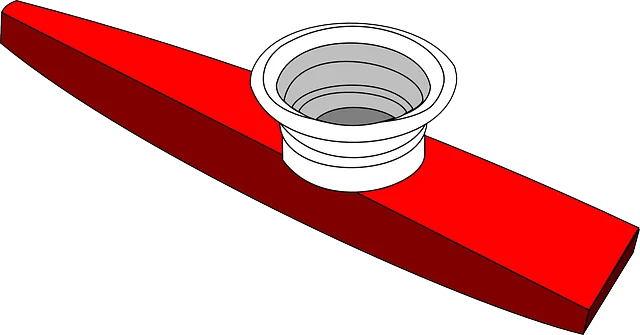Can we agree at the outset of this article that attorneys as a class tend to be awful at branding?
This statement shouldn’t be controversial, and yet I’m already wincing as I imagine my inbox filling up with comments that start off on the lines of “But whuddabout…?”
Yes, there are exceptions to every rule.
I believe I happen to be one of them and my patent law firm, The Patent Professor®, is an amazing case study in law firm branding done right (if I may be so immodest and “un-humble” as to say so myself).
In fact, I believe this so strongly that I actually wrote a book specifically about branding for lawyers in the modern era.
It’s called If You Brand It, They Will Come, and it’s designed as a practical field guide to branding a legal practice in the Internet Age, when many of the state and federal restrictions on attorney advertising and marketing practices have been relaxed. Keep watching this space for more details!

Here’s the thing: It’s really not the fault of lawyers that they’re bad at branding. When you consider how tradition and custom and laws and regulations all conspire to keep law firms’ branding honest (synonymous in this case with “boring”), it’s no wonder that legal brands like “Dull, Yawn, & Snooze, PA” are the norm.
Some firms have even managed to find creative ways around the fetters of statute and tradition to become explosively successful, even with the restrictions in place. But sometimes someone fails so epically and dramatically at their branding that you can’t help but roll your eyes.
When I first started working as a patent attorney, I began at Fish & Neave, widely recognized as one of the top, if not the top patent law firm in the world.
Their client roster included Henry Ford, the Wright Brothers, Alexander Graham Bell, and Thomas Edison. Even though some of the firm’s practices were antiquated or even outright archaic, like a senior partner who dictated replies to emails into an old-school Dictaphone for his secretary to transcribe and send off, the firm was still going strong in July of 2001, when I packed up the family and left New York City to start my own law firm.
A few years later, Fish & Neave was acquired by the law firm of Ropes & Gray. (I know—the jokes almost write themselves.) Initially, Ropes & Gray did a very smart thing. Instead of wholly subsuming Fish & Neave into the brand, they kept Fish & Neave nominally separate, in hopes of trading on Fish & Neave’s history and legacy.
But the name they chose, “The Fish & Neave IP Law Group of Ropes & Gray,” was a clumsy mouthful of a brand. Imagine being the hapless receptionist or poor paralegal who had to answer the phone with that clinker of a lengthy introduction two hundred times a day! Or trying to fit that onto firm stationery!

Are you cringing yet?
A year or so later, The Fish & Neave IP Law Group of Ropes & Gray was no more. Vanishingly few people seemed to have a grasp on what could or should have been done differently to keep the brand alive, beyond “something other than what was actually done,” which is a magnificently stated revelation of the painfully self-evident.
Or, to put it more bluntly, “Duh!”

But an article that caught my eye recently reassured me that lawyers aren’t unique in their cluelessness about branding—and sometimes even people who are literally paid to know better can make some spectacular branding missteps.
This particular story starts with telecom giant AT&T acquiring TimeWarner and DirecTV for an eye-watering $200 billion. AT&T’s vision was clear: by snagging these companies, they would create an entertainment and marketing juggernaut with coffers and viewing options that could even compete on even footing with Disney.
It was a lofty, ambitious gamble that could and should have worked to put the House of Mouse on notice. And it would have—except for one tiny (read: gargantuan) error on AT&T’s part.
Instead of nurturing the popular “cash cow” brands that were already ensconced under the TimeWarner and DirecTV banners, such as MAD Magazine, AT&T almost immediately began dismantling them. Their programming and now-defunct U-Verse package price point choices led to initial disbelief and then sticker shock, which in turn prompted an exodus of around one MILLION customers per year over the nine years AT&T remained at the helm.
For those playing along at home, that’s over 9 million customers who voted with their feet and their wallets to tell the former Ma Bell, “Thanks but no thanks.”

Obviously, something had to be done.
AT&T spun off TimeWarner into Warner Media, which almost immediately pivoted and merged with Discovery, under the new and unimaginative banner of Warner Brothers Discovery. But the hijinks and shenanigans continued. Creators were stiffed for residuals. Employees were laid off in droves. The C-suite tinkered and toyed and tried to “fix” things that weren’t broken to begin with, all while turning a blind eye to actual problems that could have done with some TLC (no pun intended). Like the branding.
One of the biggest debates within the company, and especially at the highest levels, was reported to be what the streaming service should and would be called.
The names changed so frequently that even many employees within the company weren’t sure from day to day who they were actually working for or how to answer the office phones. It’s easy to imagine how confusing this would be for consumers, who weren’t sure from one month to the next whose payee name they should put on their cable and internet access checks!
All the while, the C-suite was raising prices for customers and trimming back or hiding legacy content from HBO, which had been one of the biggest draws for many customers, while promoting a steady parade of reality TV drivel and dreck that failed to generate much buzz for more than about ten seconds at a time. It’s like replacing a full symphony orchestra with a kazoo soloist.

Now, Warner Brothers Discovery is reported to be considering dropping HBO from the name of its streaming service, the aptly named HBO Max.
(Pause for a deep, calming breath and to rub my forehead.)
The Fish & Neave branding fiasco I mentioned above was bad enough to serve as a masterclass in how branding should NEVER be done. But this nonsense makes the Fish & Neave situation look like a rounding error by comparison.
HBO, along with Cinemax, is the flagship channel for HBO Max, hence the name.
HBO has long been the standard-setter for great cable TV, with programming like the ubiquitous Game of Thrones. By largely taking HBO out of the equation, Warner Brothers Discovery is also risking the alienation of a huge chunk of its customer base while throwing away the goodwill and cachet that HBO offers to viewers.
It’s a silly, nonsensical, outright asinine move that confers no benefit to the mothership brand and could jeopardize its entire future, all in the name of achieving smugly named, shadowy “synergies” (which, in this context, seems to be code for “more money for the C-suite and investors provided by customers who get less options and quality for a bloated access fee”).
Can they do it?
Sure. It’s their company and their revenue they’re wagering on this risky move. They’ve got the rights and licenses to the various IP involved, so there’s no legal reason I know of why they can’t.
Just like with a patent or other intellectual property, they have every right to sell it, sit on it, or set the damn thing on fire if that’s what makes them happy.

Should they do it?
If someone were to ask me, which they didn’t, I would say that if they want to continue their ongoing streak of terrible branding decisions, then sure. Why the hell not? As comedian Christopher Titus once quipped, “The train’s running, might as well blow the whistle!” But if they’re really serious about making the brand profitable, they shouldn’t be trying to fix one of the few things that’s obviously working for them right now.
Or flushing away the goodwill their brand has already earned with the viewing public.
About the Author

John Rizvi is a Registered and Board Certified Patent Attorney, Adjunct Professor of Intellectual Property Law, best-selling author, and featured speaker on topics of interest to inventors and entrepreneurs (including TEDx).
His books include “Escaping the Gray” and “Think and Grow Rich for Inventors” and have won critical acclaim including an endorsement from Kevin Harrington, one of the original sharks on the hit TV show – Shark Tank, responsible for the successful launch of over 500 products resulting in more than $5 billion in sales worldwide. You can learn more about Professor Rizvi his patent law practice at www.ThePatentProfessor.com
Follow Professor Rizvi on Social Media:
YouTube: https://www.youtube.com/c/thepatentprofessor
Facebook: https://business.facebook.com/patentprofessor/
Twitter: https://twitter.com/ThePatentProf
Instagram: https://www.instagram.com/thepatentprofessor/



